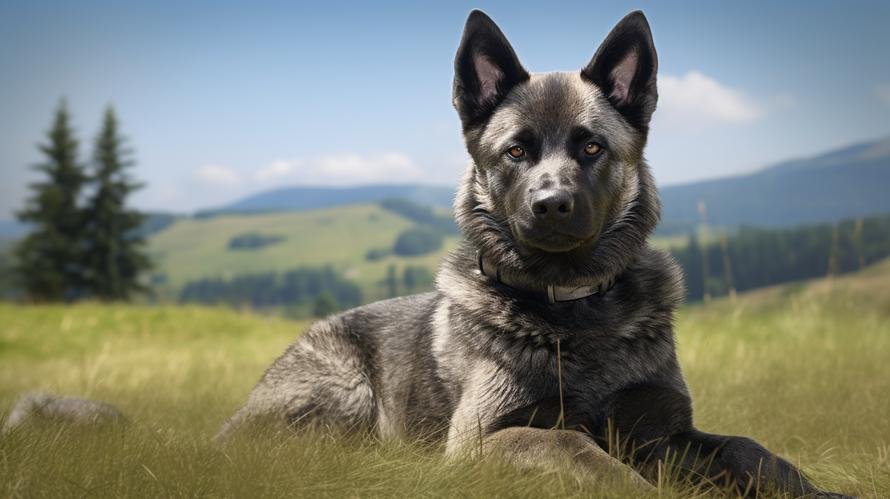In the heart of the Norwegian wilderness, there’s a unique, charismatic canine breed that has been the pride of Norway for the past 5,000 years. Renowned for its endurance, keen senses and, in particular, its courage, the Norwegian Elkhound. This breed presents an intriguing contrast, being robust and fearless, yet gentle and affectionate at home. The critical question, naturally, that springs to mind for any potential pet owner is this – is the Norwegian Elkhound aggressive?
To answer this query, let’s embark on an informative journey about this dog breed, exploring its charming qualities, dispelling myths, and offering some valuable tips for potential and current Elkhound parents.
Imagine strolling through Norwegian mountains, your faithful canine companion by your side, following both scents and trails unseen by human senses, bravely standing their ground against an oncoming elk or even a bear. This hypothetical scenario paints a vivid backdrop to the genetic heritage of the Norwegian Elkhound. Bred as a hunting, guard, and herding dog, the Elkhound taps into these abilities that have been honed through millennia.
Does this mean they are inherently aggressive? Not necessarily! Aggression in dogs often varies more due to individual temperament and specific circumstances rather than breed. It’s essential to remember that, in their historical and primary role, Elkhounds were used to corner large game and hold them off without directly engaging in combat. Their “aggression” is essentially controlled, channeled courage, obedience, and intelligence.
When brought into a domestic setting, Elkhounds carry this same courageous demeanor but typically exhibit it through energetic playfulness, alertness, and a deep loyalty toward their owners. Don’t be surprised if your Elkhound would rather sit by your side protecting you than engaging aggressively with others.
However, like any dog, an Elkhound is not a mere product of its breed characteristics. Its behavior significantly depends on how it’s raised and trained. A well-socialized and trained Elkhound can be an excellent family dog, good with children and even other pets. On the other hand, an unsocialized or poorly trained Elkhound may exhibit a higher level of aggression or problematic behavior.
Now you might wonder, how can I raise and train an Elkhound to be loving, friendly, and well-behaved? Here’s some advice for ensuring your Norwegian Elkhound remains a loving companion:
1. Socialize early and often: Introduce your Elkhound to a variety of people, environments, and other dogs from a young age. This exposure helps them become comfortable with various situations.
2. Be a confident leader: The Elkhound’s historical role required close cooperation with its human partners. Thus, they will respect a firm, consistent, and fair leader.
3. Meet their mental and physical exercise needs: Elkhounds are high-energy dogs bred for endurance hunting. Regular exercise, fun activities, and mental stimulation will help keep their energy in positive outlets, away from destructive behavior.
4. Train with rewards and patience: Use positive reinforcement like treats, favorite toys, and praise to reward your Elkhound for good behavior. This breed can be independent and headstrong, but they’re also very smart and able to learn.
By understanding the Norwegian Elkhound, you can clearly see that the breed’s traits don’t inherently make them aggressive. Proper care, socialization, and training can yield a well-behaved, lovable pet who embodies the courage, loyalty, and intelligence of its noble lineage with none of the unnecessary aggression. That, in essence, is the fascinating tale of the Norwegian Elkhound!



